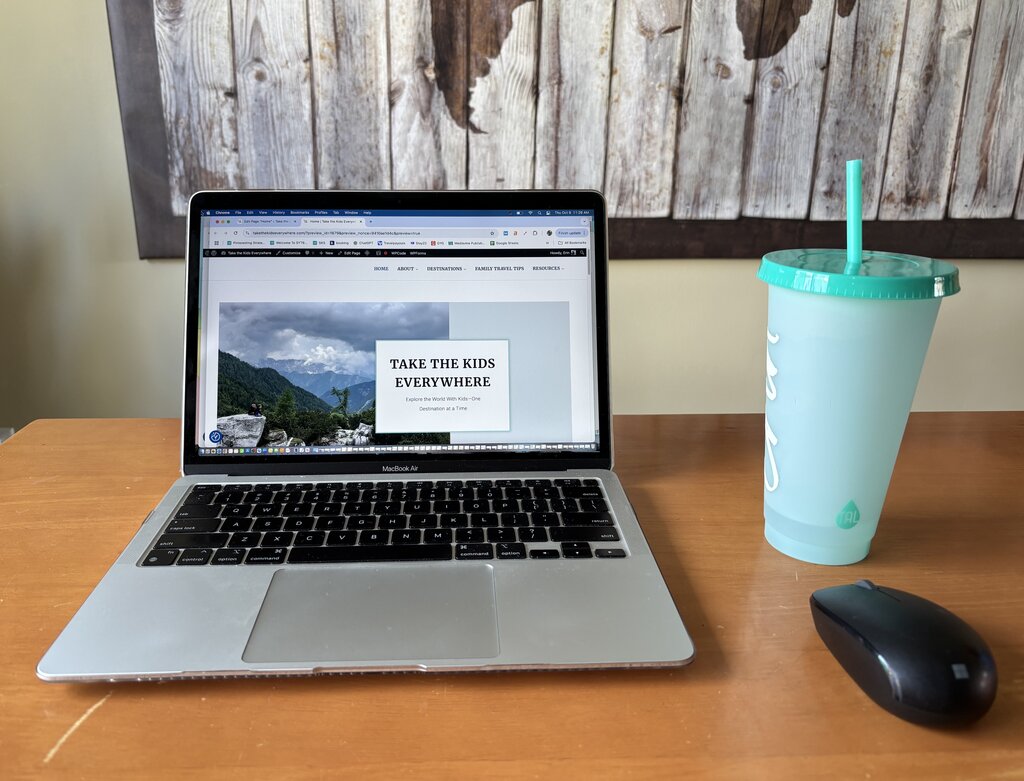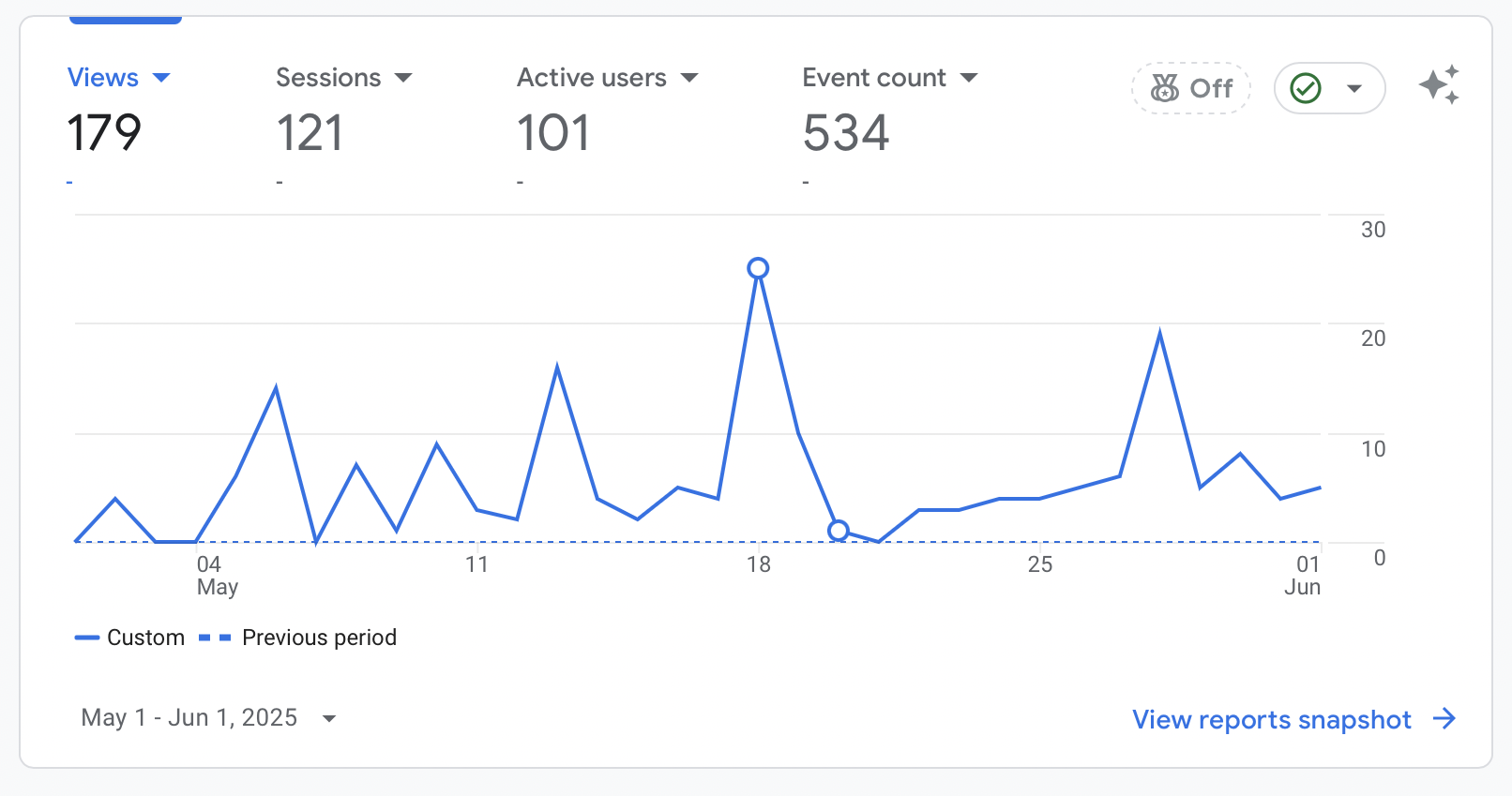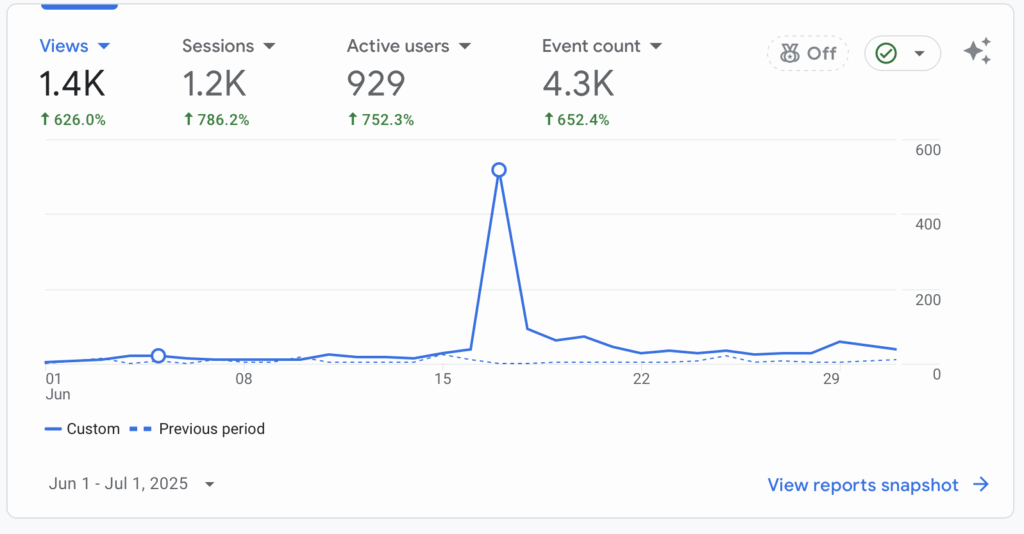How I Got My First 1,000 Pageviews (and What I’d Do Differently)
When you’re just starting a new blog, it’s hard to know what to expect.
You read stories of people hitting 50K sessions in a few months or going viral on Pinterest — and if you’re not seeing that kind of growth right away, it can feel like maybe you’re doing something wrong.
But here’s what I’ve learned: blogging growth doesn’t always come with flashy numbers or viral posts. Sometimes, it shows up quietly, one Google search at a time.
In my first two months, I hit over 1,000 pageviews — without Pinterest, social media, or even telling anyone I’d started a new site. And honestly? I was kind of surprised when I saw it.
Here’s how it happened — what worked, what didn’t, and what I’d do differently if I were starting again.
This post contains affiliate links. If you make a purchase through one of these links, we may earn a small commission at no extra cost to you. As always, we only recommend products and experiences we truly believe in.
First, Some Context
Before we get into what actually worked, I should say — this wasn’t my first blog.
I’ve been blogging for a few years, and like a lot of people, I’d gone through all the typical growing pains — trying to do everything for free, following too many different voices, and feeling stuck in constant “research mode.” Growth was slow, and honestly, it was easy to get overwhelmed.
But this time was different. I’d already learned what didn’t work. I’d invested in a solid SEO course (Scale Your Travel Blog — more on that here if you’re curious), and I finally had a clear roadmap. No more second-guessing every post or getting stuck in research mode.
With that foundation in place, I could actually focus — and that made a huge difference right from the start.
What I Did (That Actually Worked)
Let’s start with what I did — because I didn’t follow a typical blogging launch plan. No big social push, no email list, no viral moment. Just a clean slate and a different strategy than I’d used in the past.
1. I Focused on SEO From the Start
I’d blogged before, but this time I wanted to do things differently. I knew SEO would be my main traffic source, so I built content with search intent in mind. I didn’t chase every keyword — I thought about what real people might be searching for and how I could answer those questions in a helpful, clear way.
2. I Built Destination Pillars
Instead of jumping around from one topic to another, I focused on one destination at a time. I created around 10 posts per location — things to do, where to stay, day trips, practical tips — and made sure the content worked together as a group. This helped me stay focused and showed Google that the site had depth and purpose.
3. I Internally Linked Everything
I didn’t use any fancy tools — just a simple doc to track what I’d written and where I could link it. But that internal linking helped keep readers on the site longer and showed Google how the posts were connected.
4. I Wrote for People, Not Just Algorithms
If a keyword didn’t feel like something I’d search for myself, I skipped it. I wanted each post to be genuinely helpful — the kind of content I’d want to find if I were planning a trip with my kids. That made the writing easier and more enjoyable, which definitely helped me stick with it.

What I Didn’t Do — and Why That Helped
This might be the most surprising part:
I didn’t promote my blog at all during those first two months.
No Pinterest pins.
No Instagram posts.
No email list.
No Facebook group sharing.
I didn’t even tell friends or family I’d started a new blog.
And honestly, that turned out to be a good thing.
It gave me space to just write — without worrying about engagement, algorithms, or what people might think. I wasn’t distracted by follower counts or click-through rates. I could focus completely on building a solid content base and getting my SEO foundation in place.
Sometimes we think we need to do everything at once to grow — but focusing on one thing (in this case, SEO) helped me stay consistent and actually enjoy blogging again. There’s so much noise out there; this felt quiet and steady… and it worked.
The Numbers: Month-by-Month
Here’s how things looked in the first two months:
- Month 1:
- 179 pageviews
- 121 sessions
- 101 users
- Month 2:
- 1,100 pageviews (closer to 1.6K, but I filtered out a bot spike)
- 1,200 sessions
- 929 users
I wasn’t checking stats daily — honestly, I didn’t expect to see much yet — so when I randomly popped in and saw that traffic had passed 1,000 pageviews, it was such a good surprise. I celebrated right there in the kitchen.
I tracked pageviews most closely because it felt like the best marker for whether people were actually reading my posts — and that’s what I cared about most.


What I’d Do Differently
Even though this approach worked, there are a few things I’d change if I could do it again:
1. Set Up Analytics Right Away
I didn’t install Google Analytics or Search Console until I was a few posts in. Having that data earlier would’ve helped me see what was working sooner — and made it easier to track what readers were clicking on.
2. Start Tracking from Day One
Even a basic spreadsheet or doc to log posts, keywords, and updates would’ve been helpful. I did this later, but wish I’d started earlier.
3. Celebrate the Small Wins
I literally high-fived myself in the kitchen when I saw that traffic jump. From 179 to over 1,000 pageviews in a month — that meant people were actually finding my content. And that was 100% worth celebrating.
It’s easy to think those early numbers aren’t a big deal, especially when you see bloggers posting about 50K sessions. But honestly? Those small wins matter. They’re what keep you going.
Don’t underestimate those small wins. Celebrate them. They build confidence, keep you motivated, and help shift your mindset to one that sees potential instead of pressure.

Final Thoughts
Getting your first 1,000 pageviews might not feel like much in the grand scheme of blogging — but it’s a huge milestone. It means you’re showing up in search. People are finding your content. You’re on the right track.
And if I could grow a brand-new site to over 1K views in two months without promoting it? You absolutely can too.
Start small. Stay focused. Build something helpful.
You don’t need to do everything — you just need to do the right things consistently.
Looking for more tips to help grow your blog — without feeling overwhelmed?
If you’re just starting a blog or looking for a fresh approach, I hope this gave you some insight into what worked for me. Want more behind-the-scenes tips and real blogging tools? Head over to my Travel Blogging Resources page — that’s where I’ve collected the courses, tools, and strategies I actually use and recommend.

